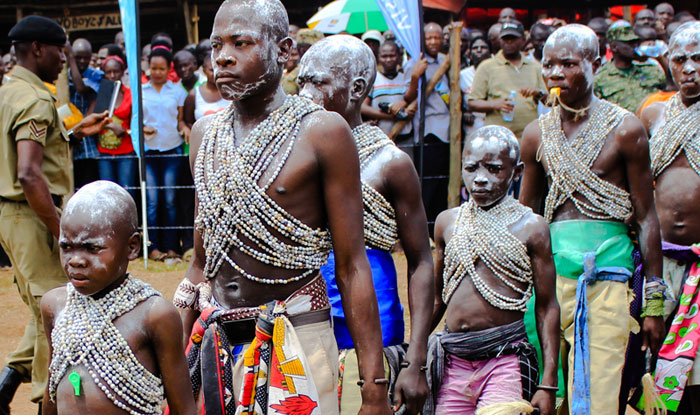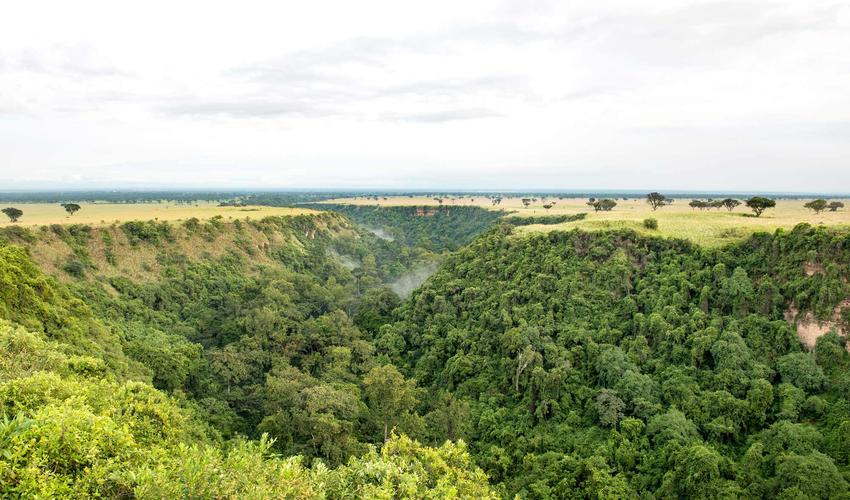Uganda is by far Africa’s one stop destination for wildlife and game viewing safaris for adventure enthusiasts. It is no surprise that any first time visitor cannot help but visit again or even refer a friend (s) for the magical experience and encounter with the vast and evenly distributed animal species in several National parks and game reserves around the country.
Among the countless wildlife magnets is the Zebra, an amazing and beautifully decorated gentle animal. Zebras, horses and wild asses are all equids, long-lived animals that move quickly for their large size and have teeth built for grinding and cropping grass. Zebras have horse-like bodies, but their manes are made of short, erect hair, their tails are tufted at the tip and their coats are striped.
Three species of zebra still occur in Africa, two of which are found in East Africa. The most numerous and widespread species in the east is Burchell’s, also known as the common or plains zebra. The other is Grevy’s zebra, named after Jules Grevy, a president of France in the 1880s who received one from Abyssinia as a gift, and now found mostly in northern Kenya.
In Uganda, the common zebra can be spotted in Kidepo Valley National Park, Lake Mburo National Park and Murchison falls National Park.

Fact file:
Swahili Name: Punda Milia | Scientific Name: Burchell’s zebra (Equus burchellii); Grevy’s zebra (Equus grevyi)
Size: 45 to 55 inches at the shoulder (Burchell’s); 50 to 60 inches (Grevy’s)
Weight: Burchell’s: 485 to 550 pounds (Burchell’s); 770 to 990 pounds (Grevy’s)
Lifespan: 40 years in captivity | Habitat: Woodlands to open plains
Diet: Herbivores | Gestation: 12 months (Burchell’s); 13 months (Grevy’s)
Predators: Lions, hyenas, hunting dogs, leopards, cheetahs
Physical Characteristics
The long-legged Grevy’s zebra, the biggest of the wild equids, is taller and heavier than the Burchell’s, with a massive head and large ears.
Zebras have shiny coats that dissipate over 70 percent of incoming heat, and some scientists believe the stripes help the animals withstand intense solar radiation. The black and white stripes are a form of camouflage called disruptive coloration that breaks up the outline of the body. Although the pattern is visible during daytime, at dawn or in the evening when their predators are most active, zebras look indistinct and may confuse predators by distorting true distance.
The stripes on Grevy’s zebras are more numerous and narrow than those of the plains zebra and do not extend to the belly. In all zebra species, the stripes on the forequarters form a triangular pattern; Grevy’s have a similar pattern on the hindquarters, while others have a slanted or horizontal pattern.
Habitat
Burchell’s zebras inhabit savannas, from treeless grasslands to open woodlands; they sometimes occur in tens of thousands in migratory herds on the Serengeti plains. Grevy’s zebras are now mainly restricted to parts of northern Kenya. Although they are adapted to semi-arid conditions and require less water than other zebra species, these zebras compete with domestic livestock for water and have suffered heavy poaching for their meat and skins.
Behavior
Family groups are stable members maintaining strong bonds over many years. Mutual grooming, where zebras stand together and nibble the hair on each other’s neck and back, helps develop and preserve these bonds. Family members look out for one another if one becomes separated from the rest, the others search for it. The group adjusts its traveling pace to accommodate the old and the weak.
The females within a family observe a strict hierarchical system. A dominant mare always leads the group, while others follow her in single file, each with their foals directly behind them. The lowest- ranking mare is the last in line. Although the stallion is the dominant member of the family, he operates outside the system and has no special place in the line.

Diet
Zebras are avid grazers. Both Burchell’s and Grevy’s zebras are in constant search of green pastures. In the dry season, they can live on coarse, dry grass only if they are within a short distance (usually no farther than 20 miles away) of water holes.
Caring for the Young
When a foal is born the mother keeps all other zebras (even the members of her family) away from it for 2 or 3 days, until it learns to recognize her by sight, voice and smell.
While all foals have a close association with their mothers, the male foals are also close to their fathers. They leave their group on their own accord between the ages of 1 and 4 years to join an all-male bachelor group until they are strong enough to head a family.
Predators
Zebras are important prey for lions and hyenas, and to a lesser extent for hunting dogs, leopards and cheetahs. When a family group is attacked, the members form a semicircle, face the predator and watch it, ready to bite or strike should the attack continue. If one of the family is injured the rest will often encircle it to protect it from further attack.
Did you know?
- Romans called Grevy’s zebras ‘hippotigris’ and trained them to pull two-wheeled carts for exhibition in circuses.
- At first glance zebras in a herd might all look alike, but their stripe patterns are as distinctive as fingerprints are in man. Scientists can identify individual zebras by comparing patterns, stripe widths, colour and scars.
For amazing African Wildlife safaris, look no further than RAK Safaris. Talk to our skilled and passionate team of travel consultants for all your travel advice and information. To book a safari or inquire, simply send us an email to info@raksafaris.com or call us now on +256-782 061184 to speak with our reservations team.





